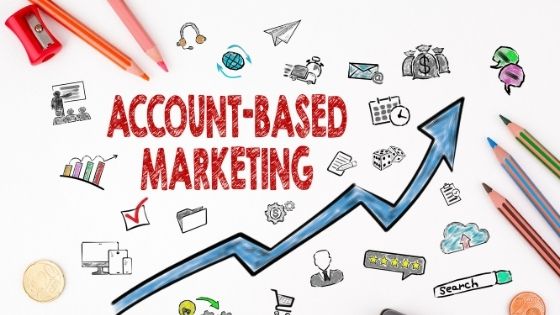Marketers use different marketing strategies to sell directly to high-value accounts. Account-based marketing (ABM) is a popular marketing strategy that supports traditional short-term marketing goals of generating leads while focusing on long-term growth. You may still have a question – what is ABM? Here is some crucial information that will help you know the basics of account-based marketing.
What Is Account-Based Marketing?
Account-based marketing or ABM is a focused growth strategy where sales and marketing departments identify high-value accounts and then work together to deliver personalized buying experiences.
The ABM strategy allows combing out less valuable clients at the early stages of marketing and ensures both departments are on the same page when targeting high-value clients. It helps the sales team focus on critical processes like customer engagement and delighting customers with personalized experiences quickly.
Now that you know what is ABM, learn about its functioning and benefits.
How Does It Work?
ABM allows your business to communicate and work with high-value accounts like they are individual markets. The focus of the strategy is to personalize every touchpoint with customers.
For example, the marketing departments personalize all communications, content, and ad campaigns for the targeted high-value accounts. The result is a boost in customer loyalty and higher ROI.
Once you have acquired a list of high-value accounts, the next step in ABM is:
Tier Target Accounts
Tiering your target accounts allows you to prioritize high-value customers in your campaigns. It is impossible to target all high-value accounts in one campaign, and tiering makes it possible to work with selected accounts while keeping other accounts in line for the subsequent campaigns.
According to marketing experts, tiering high-value accounts is also a safe strategy. If you target all high-value accounts in one campaign, your sales department will be overwhelming and challenging to manage. It will hurt your personalized communication with clients, and you might be using too many resources on the wrong accounts.
Tiering is the best approach in ABM as not all high-value accounts are created equal. You need to allocate more resources to accounts that offer high-earning potential and offer more strategic value to your business.
Account-Based Marketing and Inbound Marketing
Account-based marketing and inbound marketing are the most vital partnerships in the marketing world. They are a force to reckon with when working in tandem. When you combine these two marketing forces, you can create positive waves for your business.
As mentioned earlier, ABM is a high-target strategy. At the same time, inbound marketing is a foundational marketing method that allows you to attract customers by creating valuable content, a delightful customer experience, and SEO.
Rather than interrupting customers or target audiences with outbound marketing calls, inbound marketing focuses on providing information to the customers they need and when they want it. Inbound marketing lays a strong foundation for ABM strategy and allows businesses to target high-value accounts and allocate resources accordingly.
Advantages of Account-Based Marketing
● Messaging Is More Engaging, Leads to Higher Conversions
According to a recent market survey, 75% of customers prefer personalized offers. While personalizing every single marketing mail seems unrealistic, automation allows you to personalize communication-based on account attributes. ABM will enable businesses to achieve role-based personalized communication that makes the audience feel more connected to your brand.
● Keep in Touch With All Leads Without Wasting Time
You can have thousands of high-quality leads gained from a campaign. To achieve a higher conversion rate, you need to keep in touch with all of them, which can be a time-consuming effort. Several marketing automation tools can personalize the content on a larger scale with minimal effort. They can provide options to create dynamic content within landing pages and emails.
You can categorize customer attributes before implementing the ABM strategy and define messaging for these high-value accounts. The marketing technology stack helps implement ABM strategy by creating relevant content and dynamic messaging for targeted clients.
What Are the Elements of a Perfect ABM Campaign?
Companies that are switching from traditional marketing strategies to ABM strategies often find the switch difficult. To make things easy for you, we have shared some basics of the perfect ABM campaign.
- Choose the right kind of ABM; one-to-one, one-to-few, or one-to-many.
- Align sales and marketing
- Assemble your ABM team
- Define ABM goals
- Choose metrics to track
- Build your target list
- Create personalized content
- Launch your ABM campaign
To sum up, ABM is not a new concept in marketing. However, it has resurged and become more potent due to the changing business landscape supported by evolving technologies. Implementation of ABM strategy can drive attributed revenue, align sales with marketing, improve marketing ROI, generate qualified leads, and achieve more conversions.




















